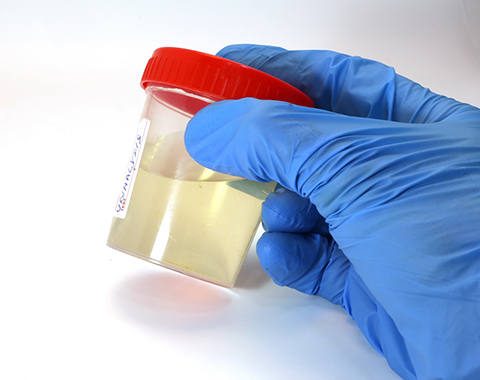New mass spectrometry assay speeds up UTI diagnosis
The urinary tract is a common site for bacterial infections that affect millions worldwide. UTIs are most often caused by E. coli and are treated with antibiotics.
To test for the bacterial cells in urine, doctors use a culture system to grow microorganisms. They then use an instrument called matrix-assisted laser desorption ionization time-of-flight, or MALDI–TOF, mass spectrometry to detect and identify bacterial species in the culture.

MALDI–TOF analysis is generally accurate, but because of the time needed to grow culture, it takes 24-48 hours to obtain results. This can delay treatment, prolong patient suffering and may contribute to increased occurrence of antimicrobial-resistant pathogens. Therefore, with bacterial infections such as UTIs, researchers want to develop quicker methods of detection.
In a recent study published in the journal Molecular & Cellular Proteomics, researchers at the Centre Hospitalier Universitaire de Quebec proposed a faster method to identify and quantify UTI infections in urine samples.
Clarisse Gotti, Florence Roux–Dalvai and their team used a technique called liquid chromatography–mass spectrometry, or LC–MS, to identify and quantify proteins. They suggested clinicians should use LC–MS for urine analysis, rather than MALDI–TOF because it is more efficient, specific and sensitive.
Most importantly, LC–MS can analyze urine samples directly, eliminating the need to grow bacterial cultures.
“There is, for now, a strong limitation in infection diagnosis in using bacterial cultures,” Roux–Dalvai said. “We don't need a bacterial culture (for LC–MS).”
In a previously published study, the team established that LC–MS can identify bacterial species in urine by monitoring MS protein signatures, which can then be used for UTI diagnosis. Moreover, they combined LC–MS with machine learning algorithms to better differentiate unique peptides and distinguish UTI-causing species from other bacterial species. This allows for more accurate analysis.
A few downsides to this first method include a lack of robustness, high costs and relatively low throughput. In their recent paper, the researchers redesigned their initial strategy so that their method can be run routinely for potential clinical use.
“We demonstrated that the bacteria can not only be identified through this process, but they can also be quantified, which is important in the case of UTIs, because you need to know the level of infection to know if it requires an antibiotic therapy or not,” Roux–Dalvai said.
In their redesign, they reduced the volume of urine required for analysis, which allows for faster sample preparation. They also switched from a more expensive, high-resolution detection mode and MS instrument to one that costs less. Their updated strategy reduced turnaround time while maintaining the quality of bacterial detection.
“For the moment, we can have results in about 10-15 minutes,” Roux–Dalvai said.
In the future, they hope to further reduce the time needed to process urine samples and enrich the UTI peptide signature to make the bacteria easier to detect.
“We want to add information in the signature about whether the strains are resistant or not,” Roux–Dalvai said.
After that, they aim to repurpose their method to detect other types of infections.
Enjoy reading ASBMB Today?
Become a member to receive the print edition four times a year and the digital edition monthly.
Learn moreGet the latest from ASBMB Today
Enter your email address, and we’ll send you a weekly email with recent articles, interviews and more.
Latest in Science
Science highlights or most popular articles

Bacteriophage protein could make queso fresco safer
Researchers characterized the structure and function of PlyP100, a bacteriophage protein that shows promise as a food-safe antimicrobial for preventing Listeria monocytogenes growth in fresh cheeses.

Building the blueprint to block HIV
Wesley Sundquist will present his work on the HIV capsid and revolutionary drug, Lenacapavir, at the ASBMB Annual Meeting, March 7–10, in Maryland.

Gut microbes hijack cancer pathway in high-fat diets
Researchers at the Feinstein Institutes for Medical Research found that a high-fat diet increases ammonia-producing bacteria in the gut microbiome of mice, which in turn disrupts TGF-β signaling and promotes colorectal cancer.

Mapping fentanyl’s cellular footprint
Using a new imaging method, researchers at State University of New York at Buffalo traced fentanyl’s effects inside brain immune cells, revealing how the drug alters lipid droplets, pointing to new paths for addiction diagnostics.

Designing life’s building blocks with AI
Tanja Kortemme, a professor at the University of California, San Francisco, will discuss her research using computational biology to engineer proteins at the 2026 ASBMB Annual Meeting.

Cholesterol as a novel biomarker for Fragile X syndrome
Researchers in Quebec identified lower levels of a brain cholesterol metabolite, 24-hydroxycholesterol, in patients with fragile X syndrome, a finding that could provide a simple blood-based biomarker for understanding and managing the condition.

